
The Nematode Collection, showcased in the Katherine Esau Science Hall, drew hundreds of visitors wanting to know more about the organism commonly known as "roundworm."
Nematologist Shahid Siddique, associate professor, UC Davis Department of Entomology and Nematology, and Alison Blundell, a doctoral candidate in Plant Pathology, coordinated the displays.
The collection highlighted both animal and plant parasitic nematodes. Visitors examined the preserved specimens and watched the movement of live free-living C. elegans (good nematodes) via a microscope.
Among the displays:
Animal Parasitic Nematodes: Anisakis nematodes from a Minke whale stomach, heart of a dog infected with heartworms; dog intestine infected with whipworms; a horse stomach parasite community including Parascaris, tapeworms and botfly larvae; adult raccoon roundworms; tree swallow infected with Diplotriaena nematode; and whipworms isolated from the human intestine.
Plant Parasitic Nematodes: Celery, sugar beet, and yam infected with root-knot nematodes; fresh tomato root infected with root-knot nematodes, and a mustard plant infected with cyst nematodes.
"Plant-parasitic nematodes are destructive pests causing losses of billions of dollars annually," Siddique writes on his website. "Economic, health, and environmental considerations make natural host plant resistance a preferred strategy for nematode control, but there are limitations to this approach. In many cases, the resistance conferred by resistance genes is partial, and some of the nematodes are able to survive. Similarly, nematode resistance genes are often effective against only one or a few species, whereas plants are exposed to several pathogens in the field. Another concern is the emergence of pathotypes that can overcome resistance. In view of all these limitations, it is important to identify additional mechanisms and tools that can be used to develop novel and sustainable approaches to the management of nematodes."
Research in the Siddique lab focuses on basic as well as applied aspects of interaction between parasitic nematodes and their host plants. "The long-term object of our research is not only to enhance our understanding of molecular aspects of plant–nematode interaction but also to use this knowledge to provide new resources for reducing the impact of nematodes on crop plants in California," he says.
The 13th annual Biodiversity Museum Day featured 10 museums or collections: Anthropology Museum, Arboretum and Public Garden, Bohart Museum of Entomology, Botanical Conservatory, California Raptor Center, Center for Plant Diversity, Nematode Collection, Museum of Wildlife and Fish Biology, Paleontology Collection, and Phaff Yeast Culture Collection.
Chairing the UC Davis Biodiversity Museum Committee: Tabatha Yang, education and outreach coordinator of the Bohart Museum.
Attached Images:
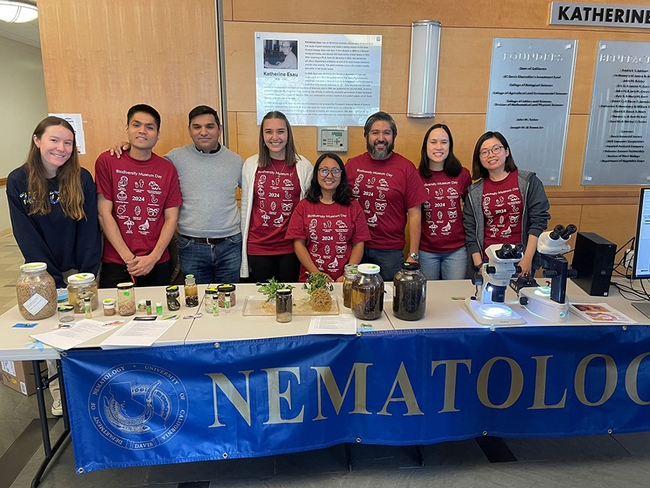
Ready to greet the crowds are (from left) Emma Kraft, undergraduate intern; Nick Latina, doctoral student, Plant Pathology; Shahid Siddique, associate professor and principal investigator; Alison Blundell, doctoral candidate, Plant Pathology; Pallavi Shakya, doctoral candidate, Plant Pathology; Bardo Castro, postdoctoral fellow; Veronica Casey, doctoral student, Entomology; and Ching-Jung Lin, doctoral candidate, Plant Pathology. (Photo courtesy of the Siddique lab)
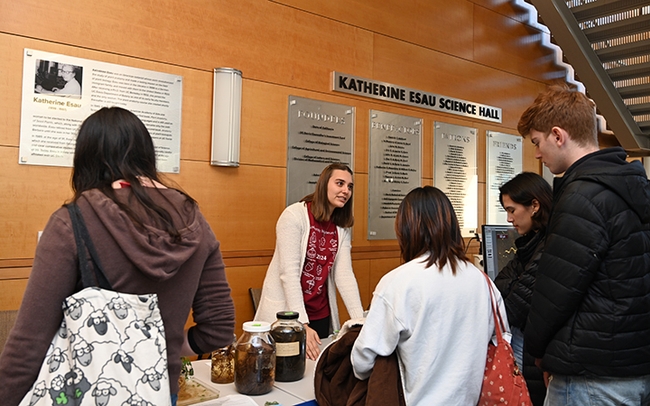
Alison Blundell, doctoral candidate, Department of Plant Pathology, answers a question. (Photo by Kathy Keatley Garvey)
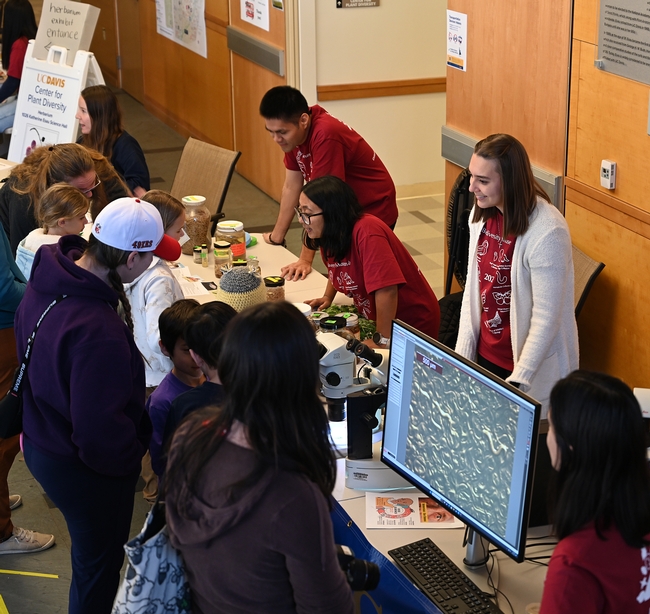
Talking to the attendees are (back, from left) doctoral student Nick Latina, Plant Pathology; and doctoral candidates Pallavi Shakya and Alison Blundell, Plant Pathology. (Photo by Kathy Keatley Garvey)
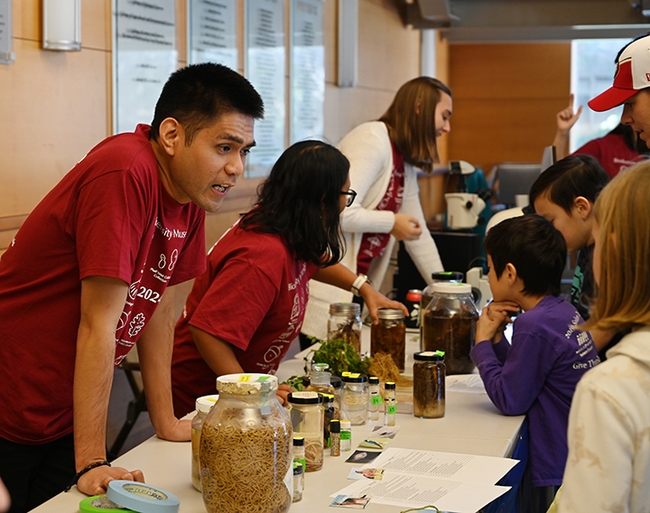
Doctoral student Nick Latina of Plant Pathology discusses the diversity of animal parasitic nematodes. (Photo by Kathy Keatley Garvey)
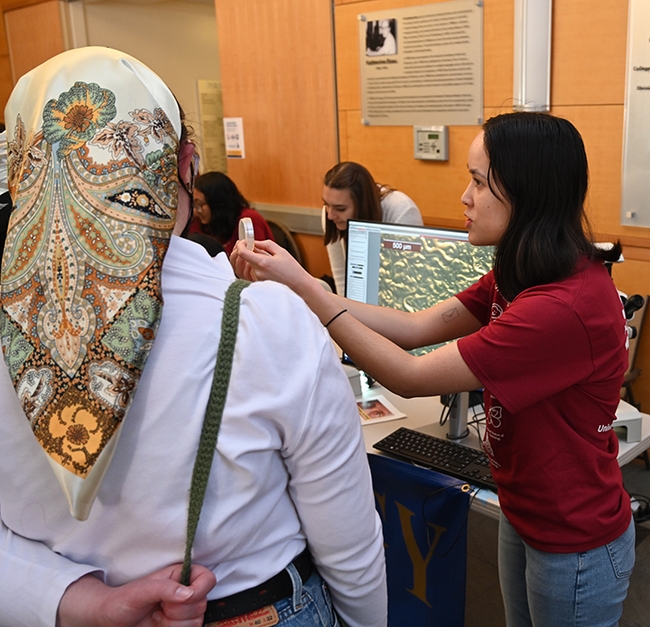
Doctoral student Veronica Casey of Entomology displaying free-living nematode C. elegans, via a microscope and discussing their movements. (Photo by Kathy Keatley Garvey)
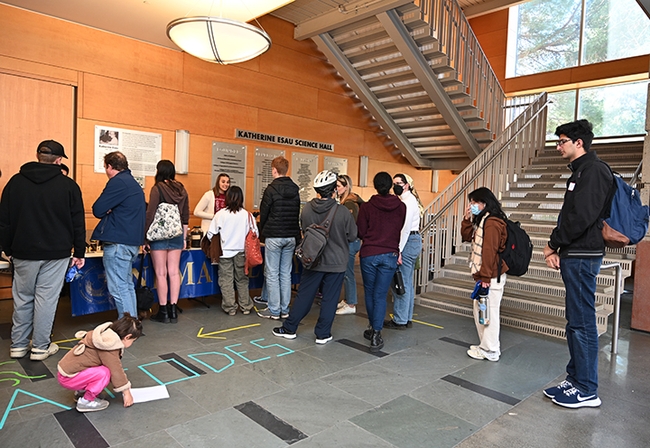
Crowds lined up from 10 a.m. to 2 p.m., Saturday, Feb. 10 to talk to the nematologists at UC Davis Biodiversity Museum Day. (Photo by Kathy Keatley Garvey)